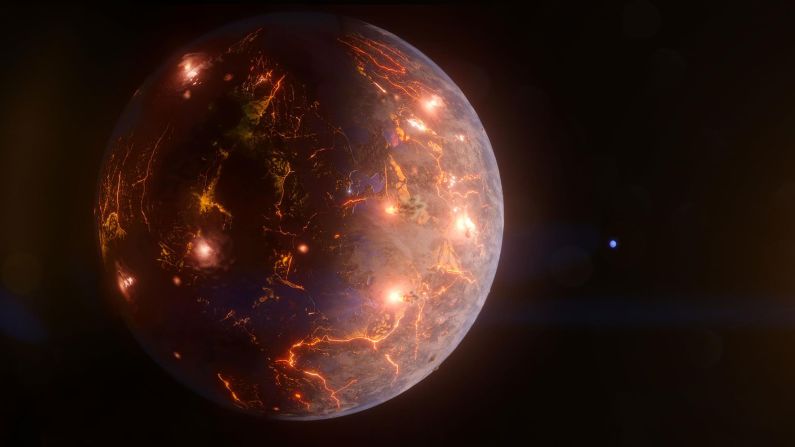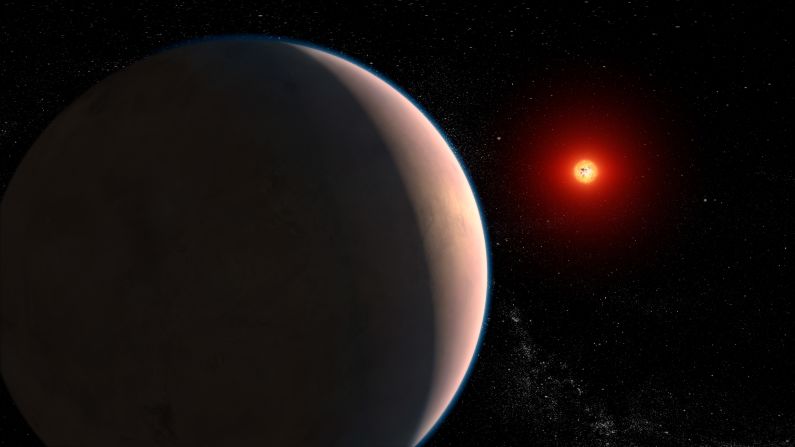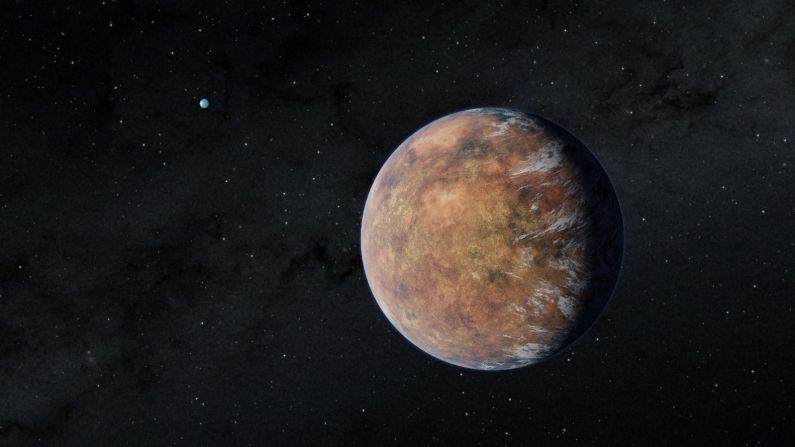Although thousands of exoplanets have been discovered outside our solar system since the 1990s, astronomers are still hunting for something that remains elusive there: exomoons.
Over the last year, a few researchers have suggested potential evidence for locating these small moons around exoplanets, but nothing has been confirmed.
Now, researchers believe they have found possible indications of an exomoon orbiting a giant, scorching exoplanet in the Lepus constellation, 550 light-years from Earth. And it’s comparable to Mustafar, a small volcanic planet sandwiched between two gas giants where Anakin Skywalker undergoes his dark, painful transition into Darth Vader in “Star Wars: Episode III – Revenge of the Sith.”
“It would be a dangerous volcanic world with a molten surface of lava, a place where Jedis go to die, perilously familiar to Anakin Skywalker,” said Apurva Oza, study author and postdoctoral fellow at the Physics Institute of the University of Bern.
The WASP 49-b exoplanet system includes a gas giant that completes one orbit around its star every three days. The planet was discovered orbiting the WASP 49 star in 2012 via the transit method, which is when an exoplanet passes in front of its star, causing detectable dips in starlight.
Astronomers believe they found evidence for a moon due to the presence of sodium gas where they didn’t expect to find it. The researchers published their findings this week in The Astrophysical Journal.
“The neutral sodium gas is so far away from the planet that it is unlikely to be emitted solely by a planetary wind,” Oza said.
To understand why sodium gas is a key indicator, the astronomers looked at Jupiter’s volcanic moon Io. Io is the most volcanically active body in our solar system, according to NASA. Volcanoes on Io belch out sodium gas, which is then pulled around Jupiter in a cloud, according to previous research.
When applying the Jupiter and Io model to the Wasp 49-b system, “the sodium is right where it should be,” Oza said. But their discovery implies that the exomoon is actually losing mass through the emission of sodium gas at high altitude.
Researchers, including the University of Virginia’s Bob Johnson in the current study, have previously demonstrated that large quantities of sodium present at exoplanets could suggest the presence of rings or even hidden bodies like moons.
If the sodium detected in the exoplanet system doesn’t lead to the discovery of a moon, it could mean that a ring of gas surrounds the planet.
“Sodium and potassium lines are quantum treasures to us astronomers because they are extremely bright,” Oza said. “The vintage street lamps that light up our streets with yellow haze is akin to the gas we are now detecting in the spectra of a dozen exoplanets.”
And a system including a star closely orbited by a giant planet with its own moon can actually exist stably for billions of years.
“The enormous tidal forces in such a system are the key to everything,” Oza said. Tides create stability for the moon’s orbit, which also help to heat it and keep it volcanically active.
The researchers also found other potential star systems where moons could be hiding from our view, but they need to find more clues.
“While the current wave of research is going towards habitability and biosignatures, our signature is a signature of destruction,” Oza said. “The exciting part is that we can monitor these destructive processes in real time, like fireworks.”










































